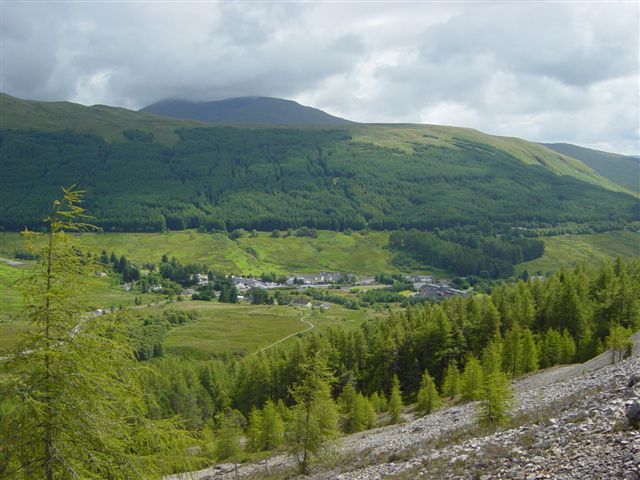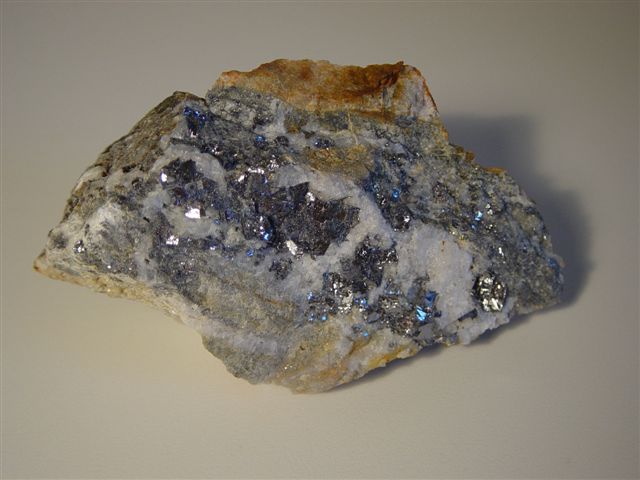27th July 2007 |
|||||||||
TYNDRUM Access: Train from Glasgow to Lower Tyndrum - the disused lead mines are less than a mile to the west. Entrances to the mines are in a restricted area, but the spoil slopes are mostly accessible, though steep. Tour: self Weather: Cloudy with light showers Summary: Lead-zinc mineralisation occurred near Tyndrum about 360 million years ago, in veins running in a northeast-southwest direction which were worked during the 19th century. Remnants of smelting operations can be found and vegetation can be seen to be still suffering from mine drainage. About 2 miles to the southwest, at Cononish, the most significant deposits of gold ever found in Scotland have been discovered in quartz veins associated with pyrite and galena. Exploratory mining and drilling carried out from 1987 found about 10 grams per tonne (parts per million) of gold and about 50 grams per tonne of silver. At this level, they are barely economic to mine, but could become so if the price of gold were to rise. The site was not visited, and in any case the mine is not open to the public, but my information is that drilling cores can be inspected. |
|||||||||
|
|||||||||

